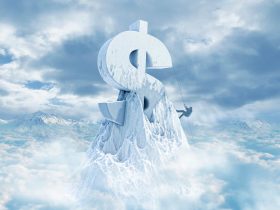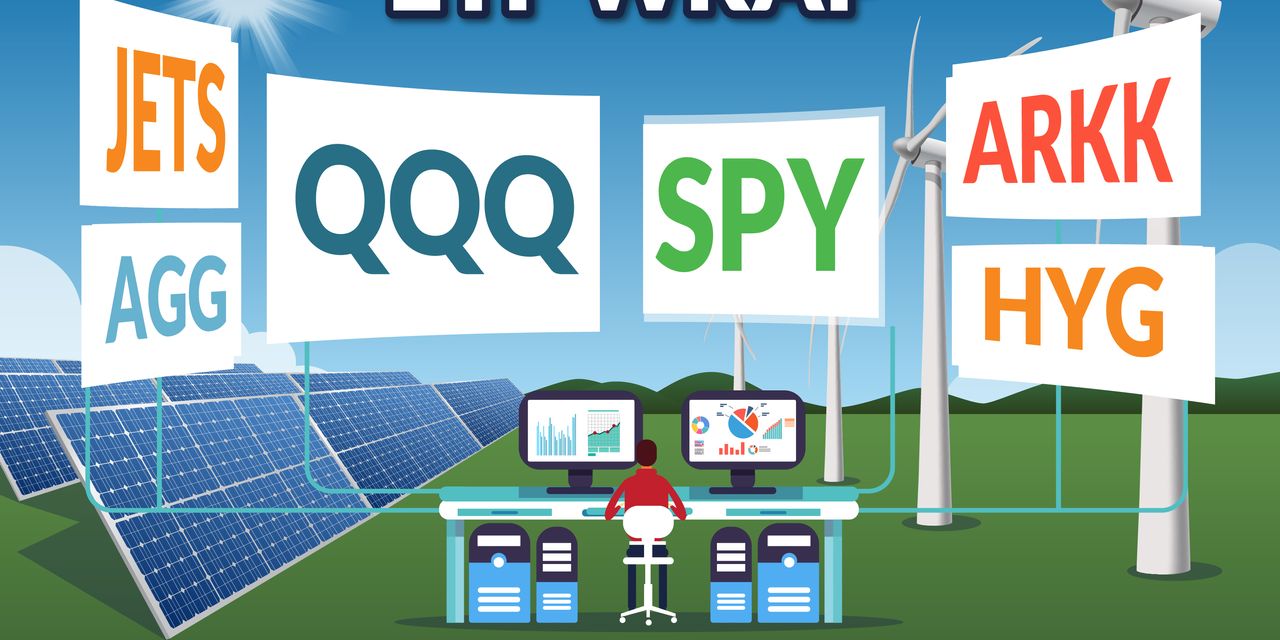Hello! This is MarketWatch reporter Isabel Wang bringing you this week’s ETF Wrap. In this week’s edition, we look at ETFs in the nuclear energy sector, which has emerged as one of the best performing ETF themes this year, driven by a notable surge in uranium prices.
Please send tips, or feedback, to isabel.wang@marketwatch.com or to christine.idzelis@marketwatch.com. You can also follow me on Twitter at @Isabelxwang and find Christine at @CIdzelis.
Sign up here for our weekly ETF Wrap.
Exchange-traded funds that invest in uranium-related stocks have skyrocketed this year, as prices for the heavy metal widely used for nuclear power hover at the highest since the 2011 Fukushima disaster in Japan, and tight supplies and surging demand could mean prices will rise further, said market and mining analysts.
The largest uranium-focused fund, the Global X Uranium ETF
URA,
which has over $2 billion under management since its launch in 2010, has climbed nearly 30% so far in 2023, while the Sprott Uranium Miners ETF
URNM
with over $1 billion under management, has jumped over 37% year to date. That compared with SPDR S&P 500 ETF Trust’s
SPY
13.1% of gain and Invesco QQQ Trust Series 1 ETF’s
QQQ
34.7% of advance over the same period, according to FactSet data.
Leading this has been the price of uranium, which has been sitting at $66.25 per pound since Sept. 15. That was the highest closing spot price since March 11, 2011, when a magnitude 9.0 earthquake struck off the coast of northeastern Japan, triggering a towering tsunami that smashed into the Fukushima nuclear plant with the leak of radioactive material into the atmosphere and the Pacific Ocean.
As a result, Japan had to shut down all its nuclear reactors despite huge inventories of uranium fuel.
From oversupply of uranium to rising nuclear power demand
Mike Kozak, metals and mining analyst at Cantor Fitzgerald, said the uranium market went from “massive oversupply” in the aftermath of the Fukushima nuclear accident to the rising demand that started in 2021 when countries around the world started pivoting towards net zero carbon emissions.
“Uranium and nuclear power were in a bear market from 2011 until a year and a half ago,” Kozak told MarketWatch in a phone interview on Thursday. “So it took 10 years of supply curtailment and utilities selling down their inventories to get to the point where we were in 2021.”
Meanwhile, the countries who committed to a net zero emissions target by 2050 but struggle with generating enough power to meet rising energy demand, have started to realize that the best and easiest way to get to net zero carbon is nuclear power, said Kozak.
“You have this global shift with the support of the government that’s behind nuclear power — they’ve not been behind it in decades, but they are today, almost entirely,” he said.
Demand for uranium in nuclear reactors is expected to climb by 28% by 2030 and nearly double by 2040 as governments ramp up nuclear power capacity to meet zero-carbon targets, according to Reuters, citing a World Nuclear Association’s report in early September.
See: Climate change leaves us at ‘gates of hell,’ says U.N.’s Guterres at event that pushes aside mega-polluters U.S., China
At the same time, utilities have to draw down on their inventories as supplies remain constrained.
There is a 50 million pound uranium deficit each year between metals that come from the mines and those required to fuel nuclear power plants. “The nuclear reactors globally use about 185 million pounds [of uranium] per year, and that’s going up each year, but the mines can only supply about 135 million pounds,” said Kozak.
See: Nuclear power could see its biggest expansion in decades, leading to increased demand for uranium
Uranium prices still too low
Uranium prices, at current levels of around $66.25 a pound, are still in “no man’s land,” Kozak said. Market consensus is that miners are looking for an incentive price of $75 a pound to invest in new capacity.
“Even though there’s been this big move in uranium prices, it’s still not ‘incentive-price’ enough to build the new uranium mines that the world needs to meet the demand curve,” he added.
Meanwhile, Kozark said the uranium spot price is still “nowhere near the peak of the last cycle,” which was at around $137 per pound as of April 2007, according to FactSet data. “We are currently around the bottom of the third inning of the current cycle.”
Investing in uranium ETFs
Despite the recent outperformance of uranium-related ETFs, the funds haven’t recorded significant inflows so far this year. URA has seen inflows of $88.9 million in 2023, while URNM has observed $90 million of inflows year to date, according to FactSet data.
Rohan Reddy, director of research at Global X ETF, said investor sentiment has been mixed about the global markets as most are positioning for a risk-off environment among equities. Meanwhile, there might be “limited awareness” in the uranium and nuclear energy sector.
“I would say it [the sentiment] can change on a dime because once performance starts to scream really well, and people see us [URA] on the radar and they understand the story about clean energy, we are very optimistic that it will continue to attract more investor flows, so it’s not surprising to me that there has been more muted inflows here today,” Reddy told MarketWatch via phone on Thursday.
Uranium-related equities have been an overlooked part of the market for a long time, so valuations are pretty attractive, Reddy added. “You still see a really long runway going forward for countries that could start to adopt nuclear power more broadly, so I think the investable opportunities for uranium is actually much larger than it was before.”
However, the risk that uranium ETFs’ investors have to be mindful of, which could put an end to the current bull-market setup very quickly, is a nuclear accident or a nuclear disaster, Kozark warned.
“What uranium investors are laser-focused on right now is any headlines or developments, positive or negative, around the Zaporizhzhia Nuclear Power Station in Ukraine,” he added.
The Zaporizhzhia Nuclear Power Station in southeastern Ukraine is the largest nuclear power plant in Europe and has been occupied by Russian forces for more than a year.
See: Worries grow about Ukraine nuclear plant as civilians are evacuated
As usual, here’s your look at the top- and bottom-performing ETFs over the past week through Wednesday, according to FactSet data.
The good…
| Top performers | %Performance |
|
abrdn Physical Silver Shares ETF SIVR |
3.0 |
|
iShares Silver Trust SLV |
2.9 |
|
abrdn Physical Platinum Shares ETF PPLT |
2.3 |
|
VanEck Gold Miners ETF GDX |
2.1 |
|
abrdn Physical Previous Metals Basket Shares ETF GLTR |
1.7 |
| Source: FactSet data through Wednesday, September 20. Start date September 14. Excludes ETNs and leveraged products. Includes NYSE, Nasdaq and Cboe traded ETFs of $500 million or greater. | |
…and the bad
| Bottom performers | %Performance |
|
AdvisorShares Pure U.S. Cannabis ETF MSOS |
-8.5 |
|
Invesco WilderHill Clean Energy ETF PBW |
-6.7 |
|
ARK Innovation ETF ARKK |
-6.5 |
|
ARK Genomic Revolution ETF ARKG |
-6.5 |
|
ARK Fintech Innovation ETF ARKF |
-6.1 |
| Source: FactSet data | |
New ETFs
-
Subversive Capital Advisor Tuesday launched the Subversive Cannabis ETF
LGLZ,
which is expected to invest at least 80% of its net assets in securities of companies that are directly involved in the global cannabis sector. The fund has a 0.75% management fee. -
AllianceBernstein Holding L.P. and AllianceBernstein L.P., announced Wednesday the launch of AB U.S. Large Cap Strategic Equities ETF
LRGC
as an active ETF on the New York Stock Exchange.
Weekly ETF Reads
Read the full article here













Leave a Reply